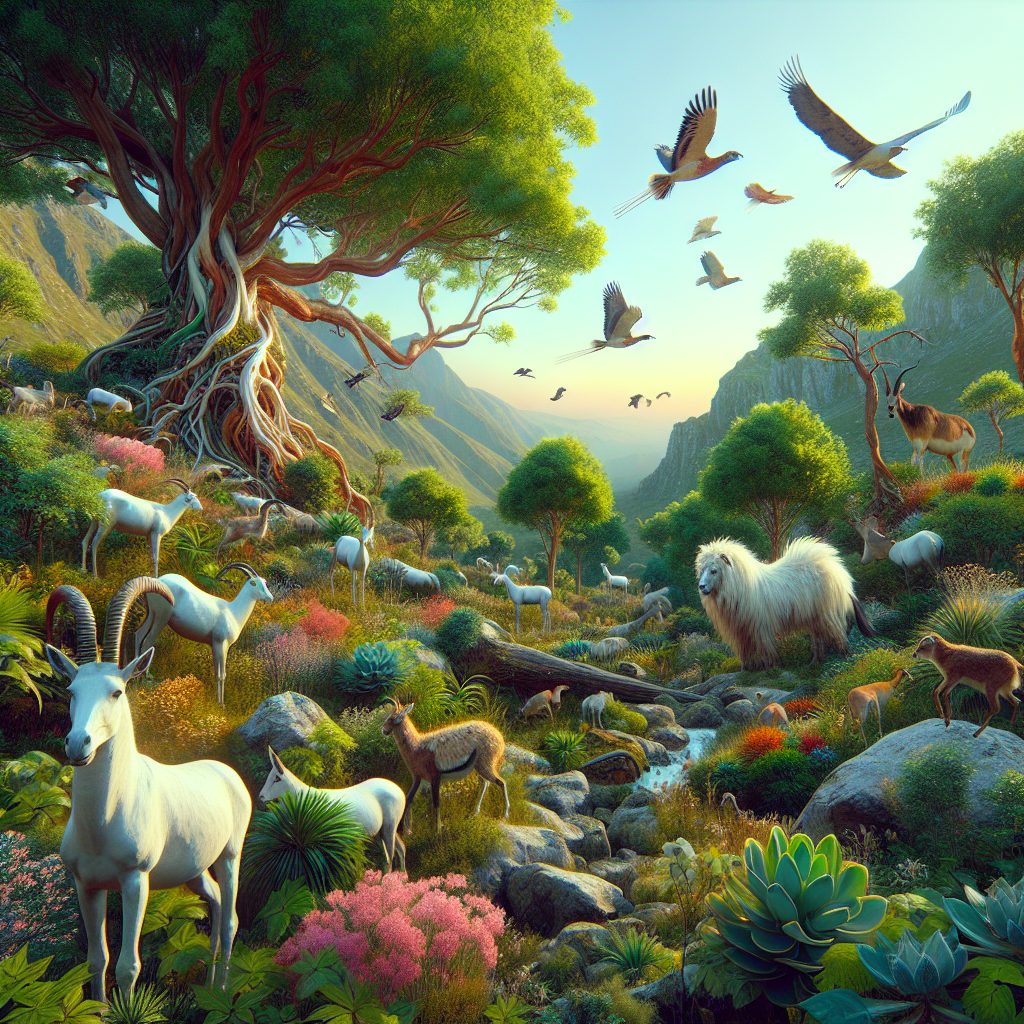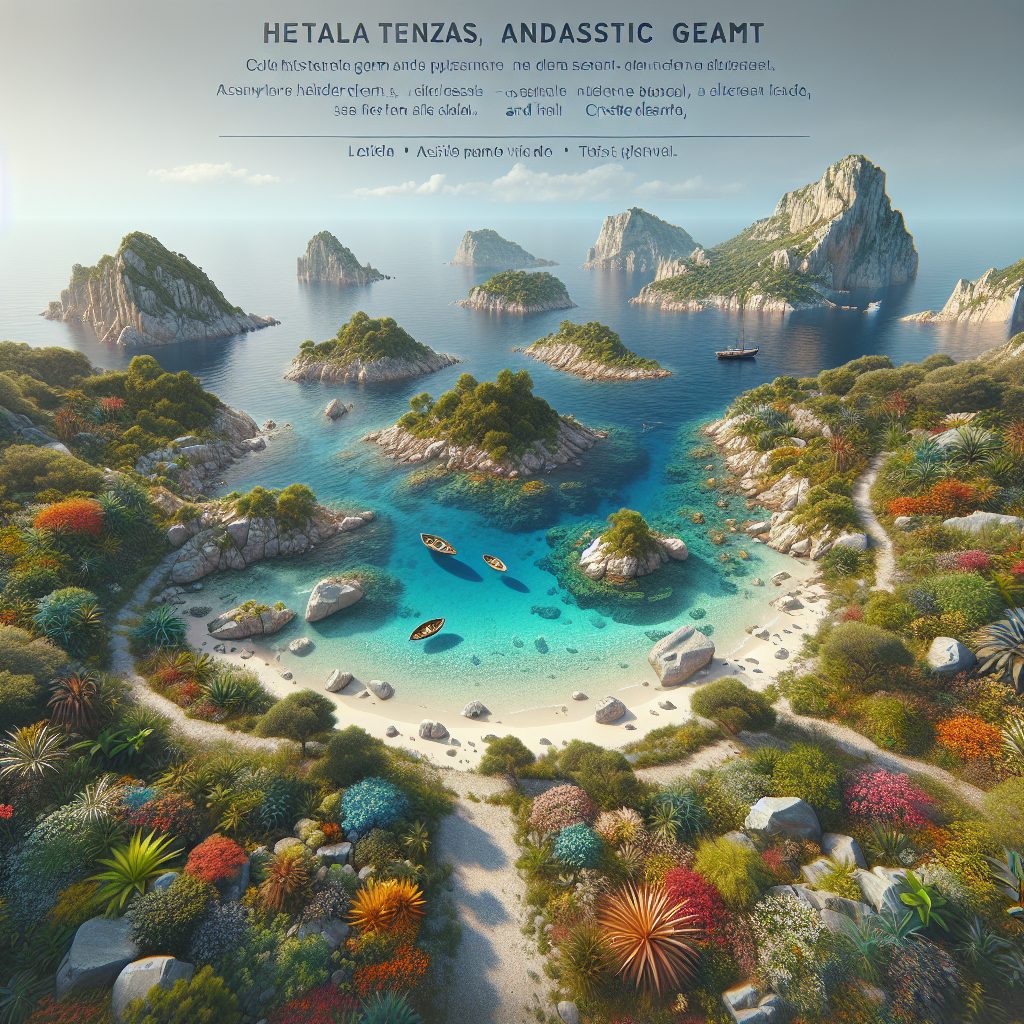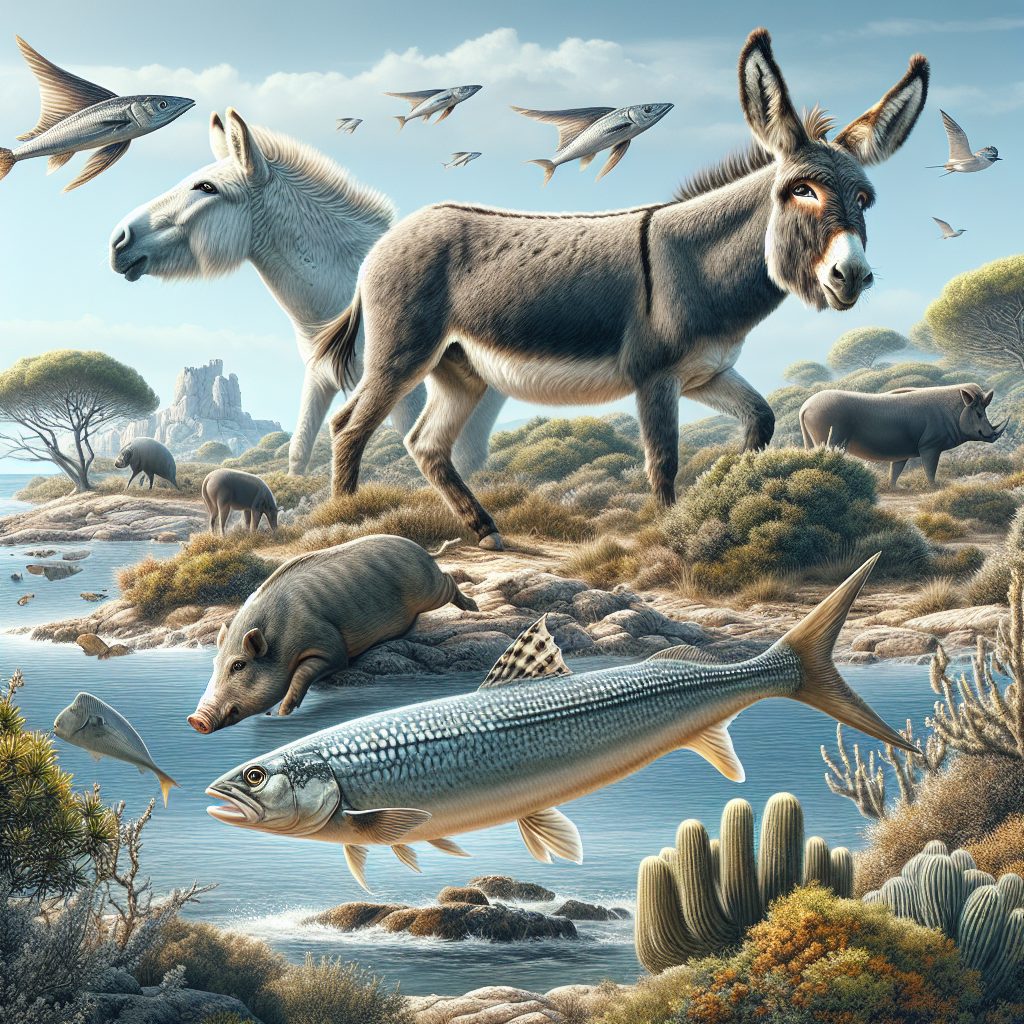Asinara is a small Italian island located in the Mediterranean Sea, off the coast of Sardinia. Known for its magnificent flora and fauna, Asinara offers a unique ecosystem that captivates the senses. One interesting fact about Asinara’s flora is its rich variety of wildflowers, including rare and protected species. These vibrant blooms add a splash of color to the island’s landscape, creating a picturesque sight for visitors. Additionally, Asinara is home to a diverse range of fauna, with several endemic species found nowhere else in the world. The island’s isolation has allowed these animals to evolve independently, making Asinara a true haven for biodiversity.
Now, let’s delve into the various impacts and unique features of Asinara’s flora and fauna. One notable impact is the ecological balance maintained by the island’s vibrant vegetation. The diverse range of plants plays a crucial role in supporting the island’s animal life, providing food and shelter for numerous species. Moreover, Asinara’s flora and fauna have also been influenced by human activities throughout history. From the grazing of wild goats to the introduction of non-native species, these interactions have shaped the island’s ecology in fascinating ways.
In the next part of this article, we will explore the key takeaways from studying Asinara’s flora and fauna. We will uncover the importance of preserving this unique ecosystem and the challenges faced in maintaining its delicate balance. Join us as we delve deeper into the wonders of Asinara’s natural world and discover how we can protect its exceptional biodiversity.
Key Takeaways
1. The island of Asinara, located in the Mediterranean Sea, boasts a unique and diverse range of flora and fauna, making it a fascinating area for study and conservation.
2. Asinara is home to several endangered species, such as the white donkey, and has implemented conservation efforts to protect and revive populations, showcasing the island’s commitment to preserving its natural heritage.
3. The rich marine ecosystems surrounding Asinara support a variety of species, including dolphins, loggerhead sea turtles, and a remarkable diversity of fish, making it an ideal spot for eco-tourism and diving activities.
4. The island’s flora also exhibits a remarkable level of diversity, with more than 600 plant species recorded, some of which are endemic to Asinara. The island’s ecosystem supports a unique range of habitats, including maquis shrubland, salt flats, and Mediterranean woodlands.
5. The presence of a former prison and military installations on Asinara presents challenges for conservation efforts, with conflicts arising between the preservation of the natural environment and the need for cultural and historical preservation. However, the island’s management is striving to strike a balance between heritage and conservation.
What is the Flora and Fauna of Asinara?
Asinara’s Unique Ecosystem
Asinara, an island located in the Mediterranean Sea off the coast of northwestern Sardinia, boasts a diverse and fascinating flora and fauna. This pristine island is a protected national park and a paradise for nature lovers. Let’s delve into the unique ecosystem of Asinara and explore its rich biodiversity.
Flora of Asinara
The flora of Asinara is incredibly diverse, showcasing a wide array of plant species that have adapted to the island’s specific conditions. The island’s vegetation is characterized by its coastal and Mediterranean scrub, endemic plants, and forests. Here are some noteworthy types of flora found on Asinara:
1. Coastal and Mediterranean Scrub
The coastal and Mediterranean scrub dominates large areas of Asinara, creating a unique landscape. This vegetation consists of low bushes, such as myrtle, cistus, and lentisk, which have adapted to survive in the harsh and salty coastal environment.
2. Endemic Plants
Asinara is home to several endemic plant species, meaning they can only be found on this island. These plants have evolved in isolation, making them particularly interesting from a conservation standpoint. Some examples of endemic plants on Asinara include the Asinara cushion plant and the Asinara daffodil.
3. Forests
Despite its relatively small size, Asinara boasts lush forests, mainly composed of Aleppo pines. These forests, along with the island’s maquis vegetation, provide habitats for various animal species while contributing to the overall biodiversity of Asinara.
Fauna of Asinara
Asinara’s fauna is as diverse and captivating as its flora. The island’s isolated location has allowed for the development of unique animal populations, some of which are endemic. Let’s explore the remarkable wildlife that calls Asinara home:
1. Wild Boars
Asinara is known for its population of wild boars, which roam freely across the island. These iconic animals are commonly spotted and contribute to the natural balance of the island’s ecosystem.
2. White Albino Donkeys
One of the most famous inhabitants of Asinara is its population of white albino donkeys. These stunning creatures, introduced to the island during its time as a penal colony, have become symbolic of Asinara’s unique wildlife.
3. Indigenous Sardinian Deer
Asinara is home to a subspecies of the Sardinian deer, known as the Corsican red deer. These graceful animals can be spotted within the island’s forests, contributing to its rich biodiversity.
4. Birdlife
Asinara is a haven for birdwatchers, attracting a wide variety of bird species. From majestic birds of prey, such as eagles and falcons, to colorful migratory birds, including bee-eaters and hoopoes, the island offers a paradise for bird enthusiasts.
5. Marine Life
Asinara’s diverse fauna extends beyond its land-dwelling organisms to include a wealth of marine life. Along its pristine coastlines, you may encounter dolphins, loggerhead turtles, and various fish species, making it a prime location for snorkeling and diving.
Top Tips for Exploring Asinara’s Flora and Fauna
- When visiting Asinara, make sure to bring your binoculars to observe the vibrant birdlife that inhabits the island.
- Take part in guided nature walks or tours to learn more about the unique plants and animals of Asinara from knowledgeable experts.
- Respect the protected status of the island by adhering to all regulations and leaving no trace of your visit.
- Explore the underwater world of Asinara by snorkeling or diving to witness its magnificent marine biodiversity.
- Keep an eye out for the famous white albino donkeys, as they are a rare sight and represent the island’s wildlife conservation efforts.
Frequently Asked Questions
1. What is the significance of Asinara flora and fauna?
The flora and fauna of Asinara Island hold great ecological significance. The island is known for its diverse and unique plant species, some of which are found nowhere else in the world. Similarly, Asinara’s animal life is diverse and includes rare and endemic species. Preserving and studying the fauna and flora of Asinara helps in understanding and protecting the island’s delicate ecosystem.
2. How many plant species exist on Asinara Island?
Asinara Island is home to around 700 plant species. These species include several endemic plants, as well as those of Mediterranean and coastal origins. The island’s varied landscape, with its different habitats, supports the growth of a rich and diverse range of vegetation.
3. Are there any endangered animal species on Asinara?
Yes, Asinara is home to some endangered animal species. The island provides a shelter for Mediterranean marine mammals, such as the monk seal, as well as rare bird species like Bonelli’s eagle. In recent years, conservation efforts have been successful in protecting these endangered species and their habitats.
4. What is the main threat to Asinara’s flora and fauna?
The main threat to Asinara’s flora and fauna is the introduction of invasive species. Some invasive plants and animals, brought to the island unintentionally or deliberately, can outcompete native species and disrupt the delicate balance of the ecosystem. Controlling and preventing the spread of invasive species is crucial for the conservation of Asinara’s biodiversity.
5. How can visitors contribute to the conservation of Asinara’s flora and fauna?
Visitors can contribute to the conservation of Asinara’s flora and fauna by following certain guidelines. These include not leaving any waste behind, avoiding the collection or disturbance of any plant or animal specimens, and staying on designated paths to minimize human impact on delicate habitats. Respecting and appreciating the natural beauty of Asinara without causing harm is the key.
6. Are there any restrictions for exploring Asinara’s natural areas?
Yes, there are some restrictions in place to protect Asinara’s natural areas. Access to certain sections of the island may be limited to authorized personnel only to ensure the preservation of sensitive habitats and wildlife. Visitors should follow the guidance of park authorities and respect any restrictions in place for the benefit of the island’s flora and fauna.
7. Are there guided tours available for exploring Asinara’s flora and fauna?
Yes, guided tours are available for visitors who wish to explore Asinara’s flora and fauna. These tours are led by knowledgeable guides who can provide information about the various plant and animal species found on the island. Joining a guided tour not only enhances the experience but also helps in understanding the importance of conservation.
8. What are the best times of the year to observe the flora and fauna on Asinara Island?
The best times to observe the flora and fauna on Asinara Island are during the spring and autumn seasons. Spring brings a burst of colorful blooms and is an ideal time to witness the island’s diverse plant life. Autumn, on the other hand, offers opportunities to spot migratory birds and observe the changing foliage.
9. Is camping allowed on Asinara Island?
No, camping is not allowed on Asinara Island. Due to the need for conservation and protection, overnight stays on the island are limited to specific accommodations and facilities. This ensures that the delicate flora and fauna of Asinara are not disturbed or harmed by unregulated human activities.
10. What measures are in place to preserve Asinara’s flora and fauna?
Asinara’s flora and fauna are protected through various measures. The island has been designated as a national park, and its conservation is regulated by strict laws and regulations. Research and monitoring efforts are carried out to assess the health of the ecosystem and identify any threats. Additionally, awareness campaigns and educational programs promote the importance of preserving Asinara’s unique biodiversity.
Final Thoughts
Exploring the flora and fauna of Asinara Island is a captivating experience that offers insights into the marvels of nature. The island’s vibrant plant life and diverse animal species truly showcase the unique beauty of this Mediterranean jewel. However, as visitors, it is crucial that we approach Asinara with respect and responsibility to ensure its preservation for future generations.
By understanding the significance of Asinara’s flora and fauna and actively participating in its conservation, we can contribute to the long-term protection of this exceptional ecosystem. Let us appreciate the delicate balance that exists on Asinara Island and strive to cherish and safeguard its remarkable biodiversity for years to come.






